If there’s one thing we care about at Rockfish Wildlife Sanctuary, it’s fashion. 💅👗💄
Not for our humans, though—our rehab team’s scrubs are too covered in opossum formula and dirt for us to care about trendsetting. 🍼 Our wildlife patients, on the other hand, get only the very best when it comes to wildlife rehab haute couture. We were privileged to bear witness to a true fashion statement from Northern Mockingbird 25-514 this month!
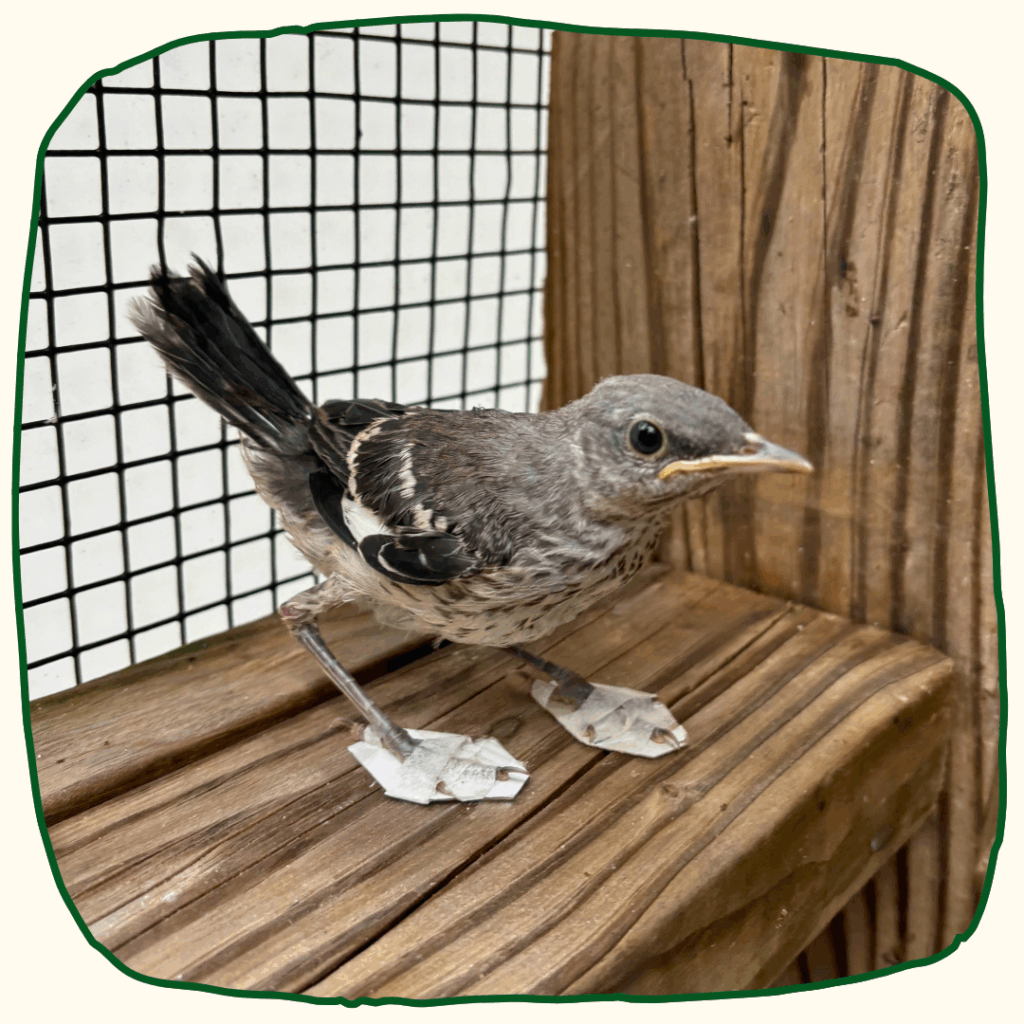
Rescue Story
This spunky “NoMo” fledgling came to us in early July after being found as a nestling, alone on the ground in a Mechanicsville yard. 🐶 After initial treatment and evaluation from our friends at the Wildlife Center of Virginia, the young mockingbird was transferred to RWS for continued rehabilitation. We’ve had a steady flow of Northern Mockingbirds in care this season. Thus, this patient went from being a lone orphan to having some same-species buddies to learn and grow alongside.
While settling into our outdoor fledgling enclosure, though, our team noticed that the patient was “knuckling.” This means 25-514 was not placing its toes in a normal, weight-bearing position, instead curling its toes underneath and walking on the sides of its feet. We’ve included a severe case of knuckling treated by the California Wildlife Center below, for reference.
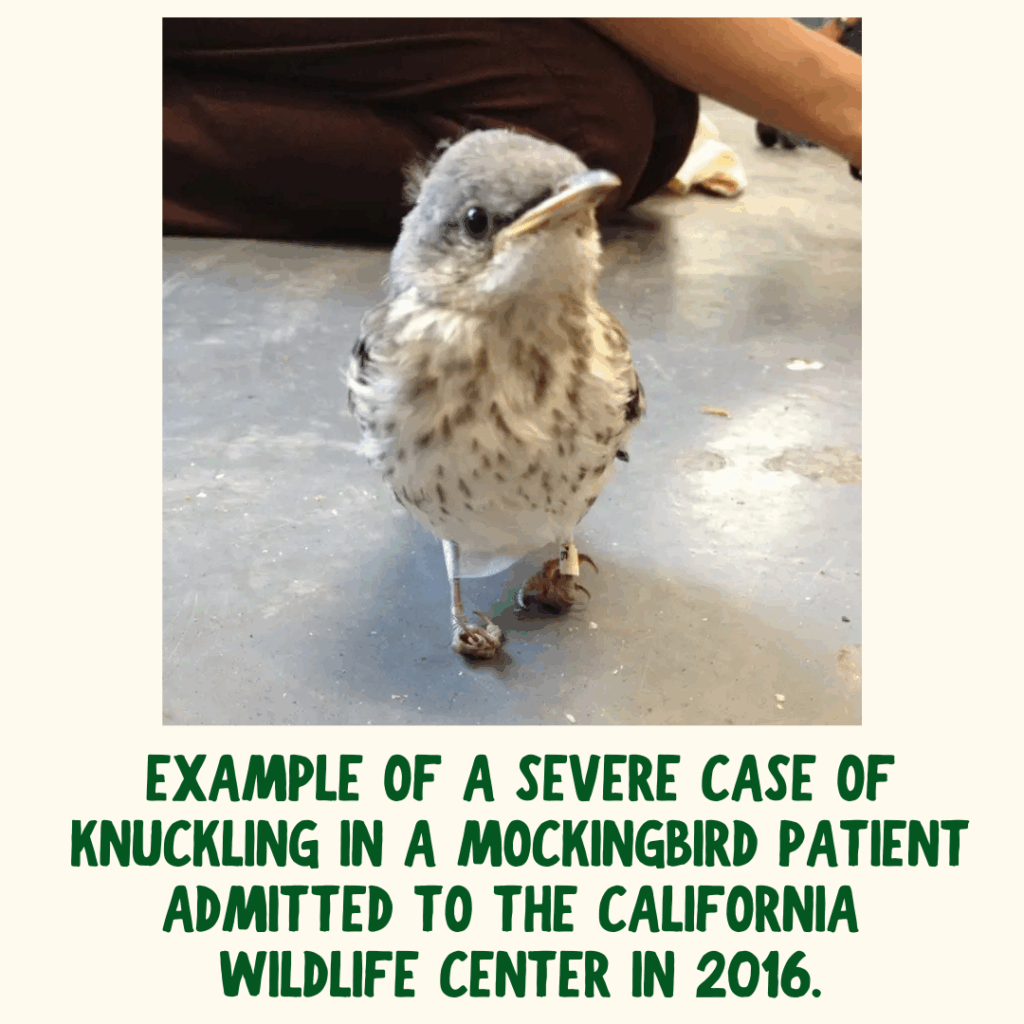
Knuckling can occasionally happen in young songbirds who have spent time outside of their nest too early, like this little one had. Without the right nest shape and structure supporting them during that critical time period, the bird’s legs can splay outward and its feet may begin to curl improperly. 🪹
This risk informs baby bird care at RWS and other rehab centers worldwide. It’s why we house nestling songbird patients inside of crocheted nests supported by sturdy plastic containers, like a yogurt cup. And, it is yet another reason why wildlife rehabilitation should never be attempted without proper training and licensure! ⚠️
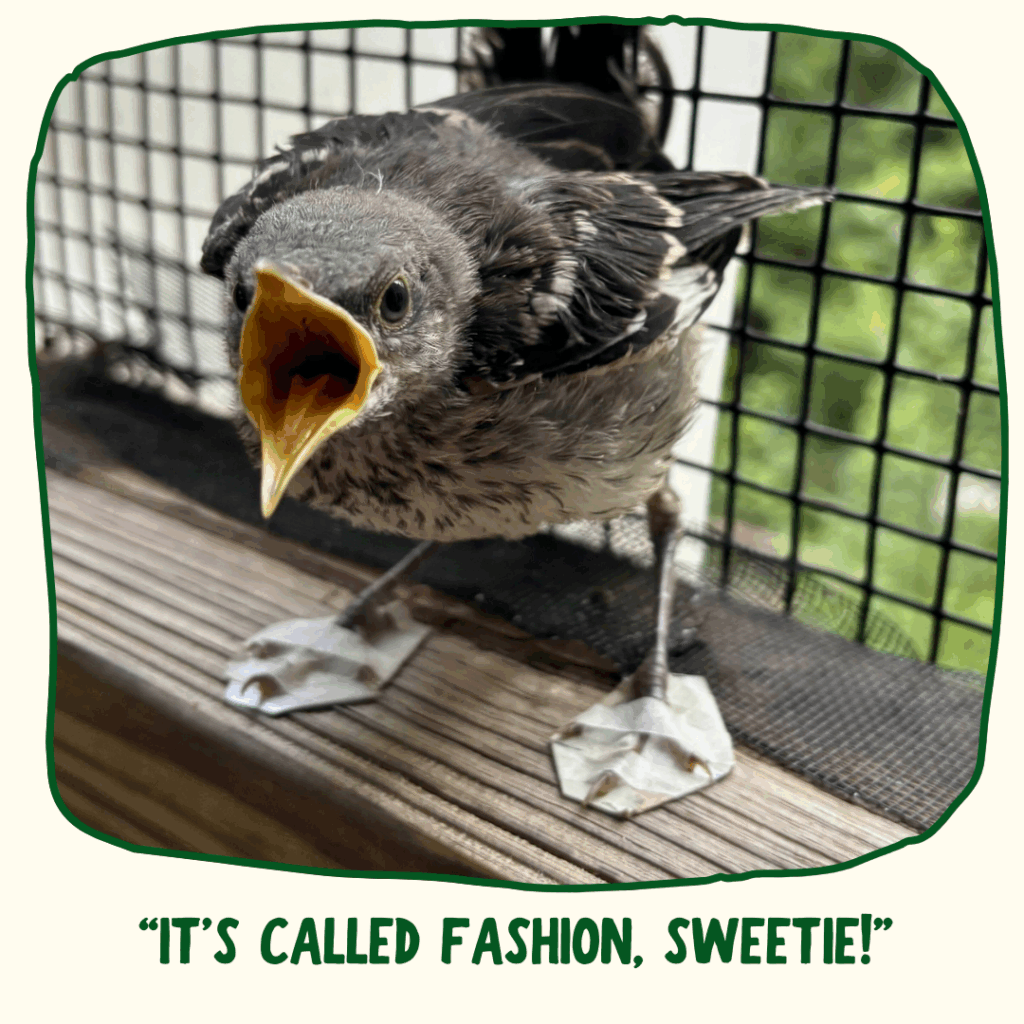
The solution? Shoes!
Sometimes, young birds with minor knuckling issues can fix their foot posture with a few manual adjustments to their perching position. However, other patients need extra support. That’s where those charming shoes come into play. 🥾
Bird shoes are not just a fashion statement. They’re a treatment!
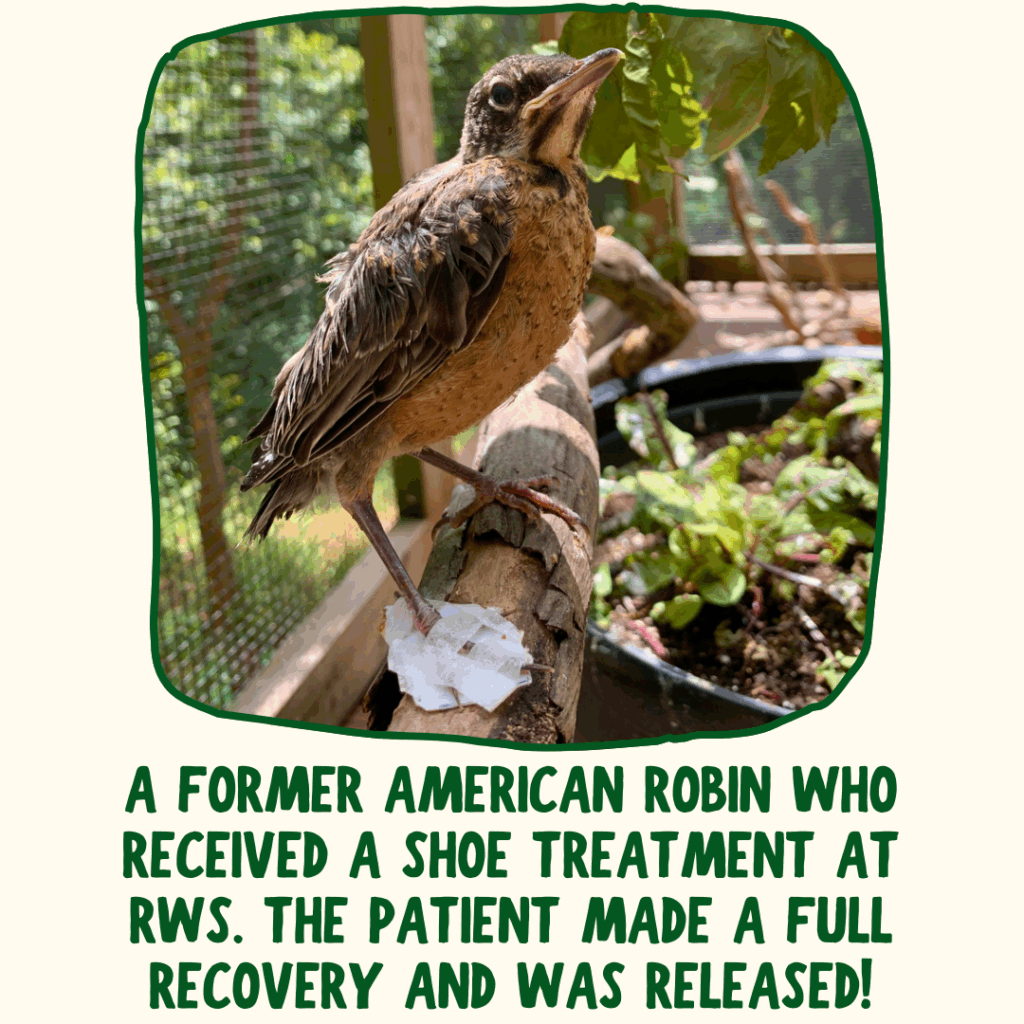
In wildlife rehab, bird “shoes” gently guide the toes into alignment by keeping the foot stretched open in a proper flat position. Usually, just a few days in a supportive shoe is all a patient needs to regain correct function and posture. 🦶
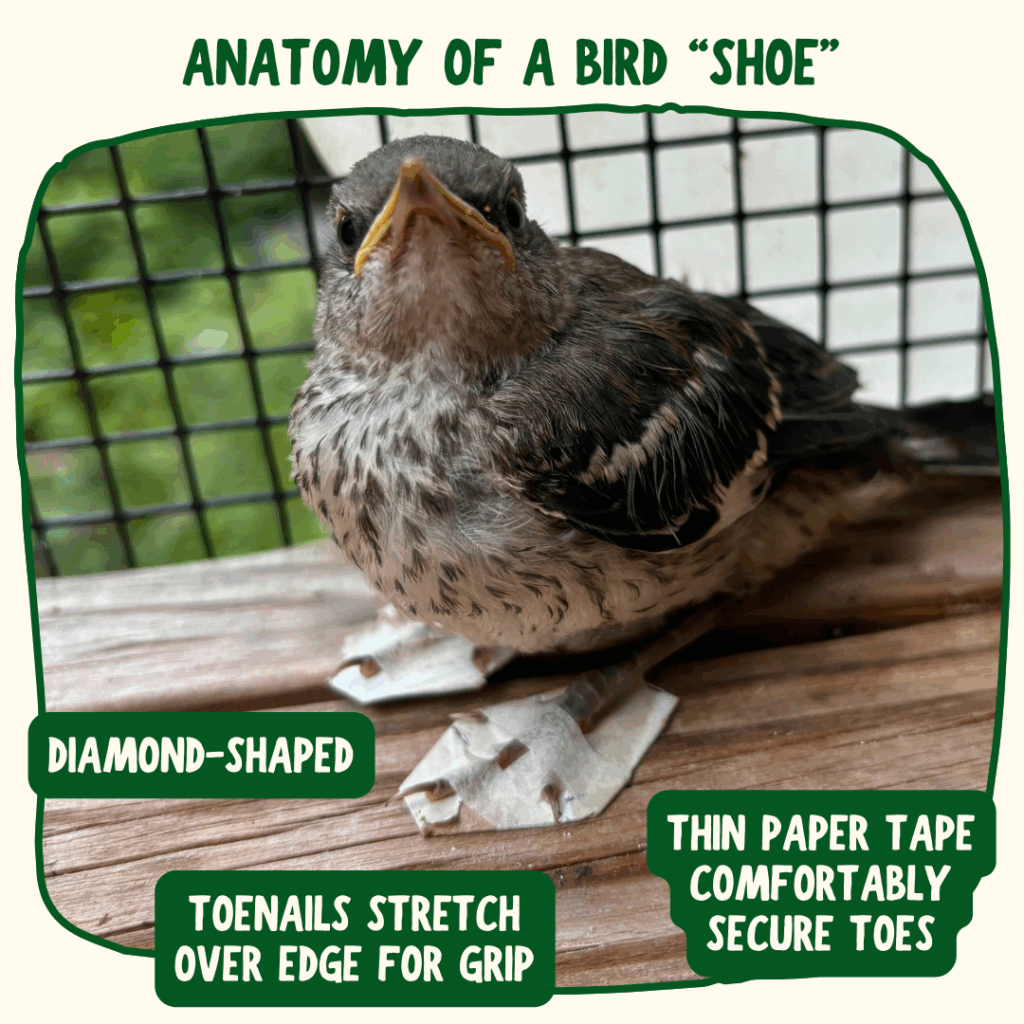
After two days, Northern Mockingbird 25-514 told us it was done with its shoes by taking a bath and ruining them both. 😆 However, its feet look much better already! One foot does need a couple more days of sandal treatment still, but the fact the NoMo took a bath tells us it’s feeling well enough to display its charming natural behaviors.
Other Care Considerations
More good news? This patient is a very enthusiastic eater! Our staff and volunteers feed it (and all of the other baby birds in our fledgling enclosure) every 30 minutes throughout the day. We’re going through about 30,000 mealworms per week currently. 😱
Live insects tend to be some of our more expensive food items, typically costing about $250 per weekly shipment. However, it’s critical we provide these food sources to prep insectivores like this Northern Mockingbird for life in the wild. Eat up, birds! 🪱
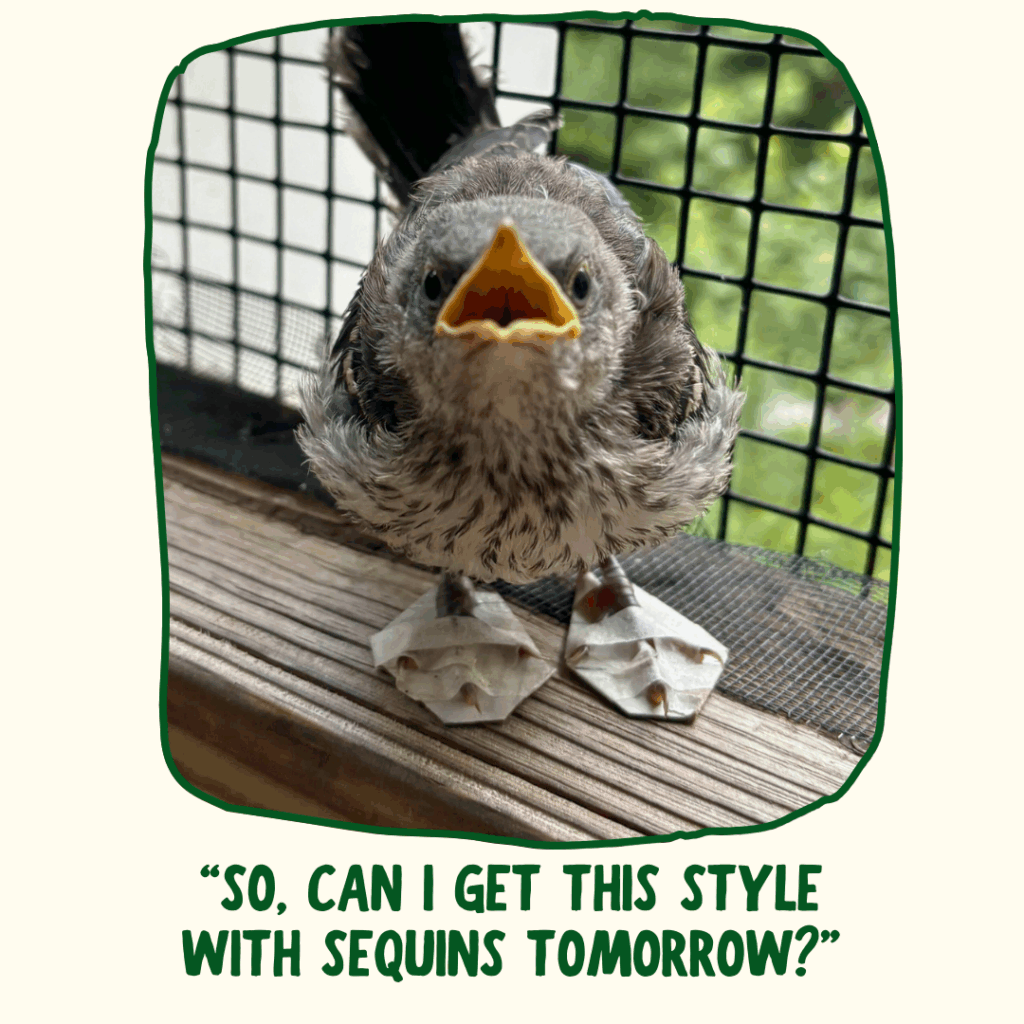
Ultimately, we chose 25-514 as our featured patient this month because its journey holds a key reminder:
Footwear doesn’t need to be glamorous to be functional.
That said, the “Birdkenstock” will never go out of style! 😎
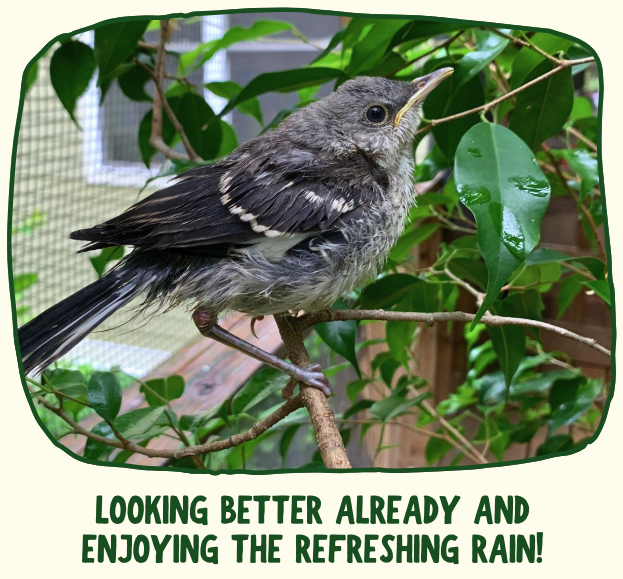
Thank you for reading July’s Patient of the Month—and rock those sandals this summer in honor of 25-514! 👡
July 15, 2025
Published:
Be the first to comment!